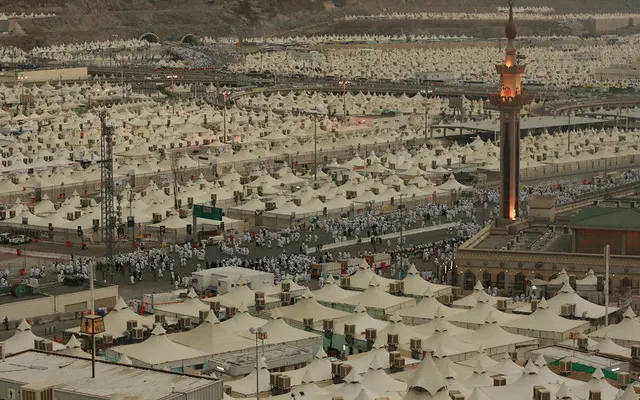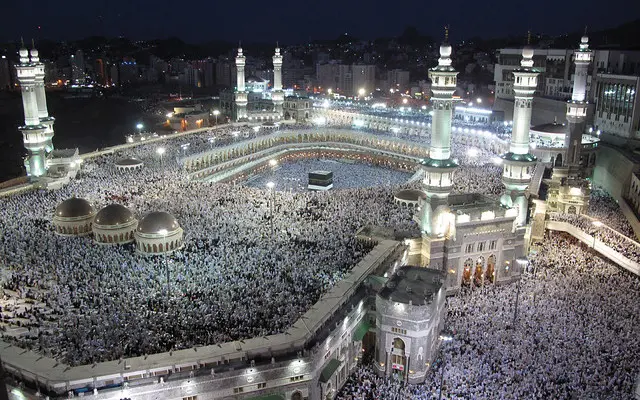Hajj rites: Steps day by day
Learn about the mandatory rituals followed during Hajj and detect the only way that can lead to a successful and “valid” pilgrimage.
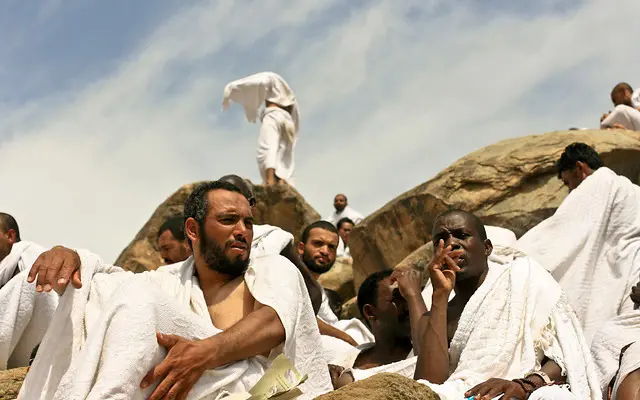
Performing a “valid Hajj”
There is a common belief among Muslims that a proper performance of Hajj can absolve the pilgrim from all previous sins. But scholars of Islam point out that just undertaking the Hajj is not enough. A valid pilgrimage should involve an honest intention of coming closer to God and at the end of the day, it is only the God who will judge the intention of each pilgrim who undertakes the Hajj.
The Hajj includes a series of important rituals that have a fundamental role at the fulfillment of a successful pilgrimage. Those involve specific series of rites followed by the Prophet Mohammad almost 14 centuries ago, while they are considered as the reenactment of a sequence of events related to the life of the biblical prophet Abraham and his family (Hagar and Ismael).
The sequence of the followed rituals
In order to accomplish the demanding requirements of the Hajj, pilgrims are used to following handbooks and getting help from professional guides who offer instructions and advice of carrying out the rituals correctly and within the limited period of the pilgrimage.
Below there is a detailed sequence of the required rites to be followed as well as a description of the manners of carrying out them for a successful Hajj.
Ihram (spiritual purity/dress code)
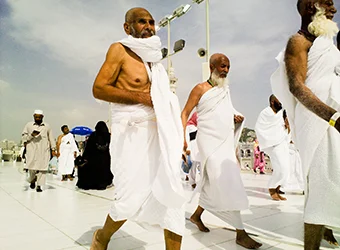
While approaching Mecca, the pilgrims are invited to enter a state of holiness known as Ihram. The first practical step of achieving it is by changing their clothing to a specific garment, while they are also called to abstain from a series of activities and habits.
According to tradition, the faithful are changing their everyday clothes as soon as they are reaching the Miqat. Miqat that in Arabic means “a stated place” refers to six geographical areas that construct a boundary around the area Mecca. As the male travelers reach or pass by those points they have to wear two plain, white and seamless sheets of cloth that serve the lower and the upper part of the body. For women, the dress code includes regular clothes as long as they are clean and modest. Female pilgrims should also cover their hair with a headscarf (hijab) but they should avoid covering their faces (niqab).
At this stage and throughout the whole Hajj, Muslims are forbidden from engaging sexual relations, cutting their hair, trimming nails, using perfumes or makeup, damaging plants, killing animals, carrying weapons, arguing, fighting or losing temper.
The guidelines and the prohibitions of Ihram are aiming to a state of spiritual purity that can be achieved only through the rejection of symbols of materialism and worldly pleasures. Ihram helps the pilgrims to be mentally clean and concentrated on their religious duties by moving the focus to the inner self over the external appearance. Another interesting connotation that derives from the dress code is this of equality. Since clothing is believed to show individuality and social status, the simple and modest garments target to demolish those superficial barriers between pilgrims and point out their equality in front of God.
1st Day of the pilgrimage
Tawaf
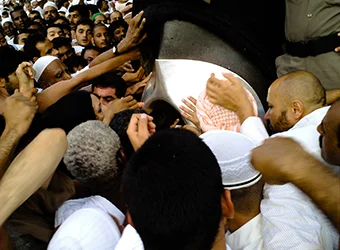
During the first day of Hajj, the pilgrims enter the Great Mosque of Mecca and perform the ritual of Tawaf. This involves a seven-time counterclockwise walking around Kaaba, the 15-meter black building that was built from Abraham and symbolizes “the house of God”. According to the tradition each circuit starts by kissing or touching the Black Stone, a stone that the legend says that have been brought from Heaven by Archangel Gabriel. Nowadays, due to the crowds, it might be impossible to reach the stone, so the cycle can start when the faithful just point towards the holy object. Tawaf represents the oneness of God and the unity of Muslims who are walking collectively around the house of the “one God”.
After finalizing Tawaf the Hajj attendants have to pray at a site near Kaaba inside the Great Mosque. Due to free space scarcity, the prayers can be made at any other place inside the mosque. Eating is prohibited in the Great Mosque but the pilgrims are allowed to drink water in order to avoid dehydration. For this reason, water from the holy Zamzam well is offered to the crowds.
Sa'ay (from Safa to Marwa)
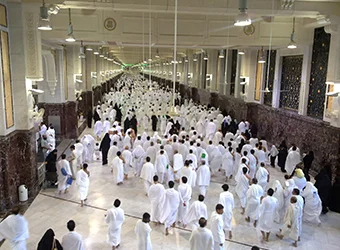
The second rite of the day is Sa'ay. This includes walking seven times between the two hills of Safa and Marwa. The ritual is a reenactment of the effort of Hagar (Abraham's wife) to find water for his son Ismail. Today the walking distance can be covered in an enclosed and air-conditioned corridor which is covered with marle. There is also a walkway for those you cannot walk.
By completing Sa'ay the pilgrims are heading to Mina. It is a small village situated 10 kilometers from Mecca and there the faithful stay the whole day offering an afternoon, evening and night prayer. They also spend the night here at one of the world’s largest temporary camping place with thousands of tents.
2nd Day of the pilgrimage
Wuguf (Mount Arafat)
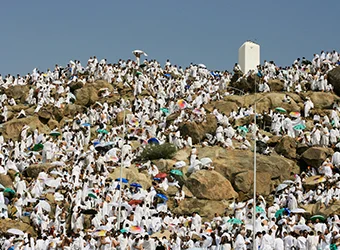
On the second day of Hajj which falls on the 9th of the Arabic month Dhu al Hijjah, the pilgrims leave Mina and head to Mount Arafat that is located about 20 kilometers east of Mecca. This is a culminating time for the pilgrimage since at this highly sacred place Prophet Mohammad delivered his final sermon.
The mountain that is also called “mount of mercy” is considered as a place where the spirit of God comes closer to the Earth. The ritual here starts at noon and lasts until sunset. It is called Wuguf (standing) since the faithful stand (those who are able to do so) for the whole day praying for forgiveness and wellbeing.
Muzdalifah
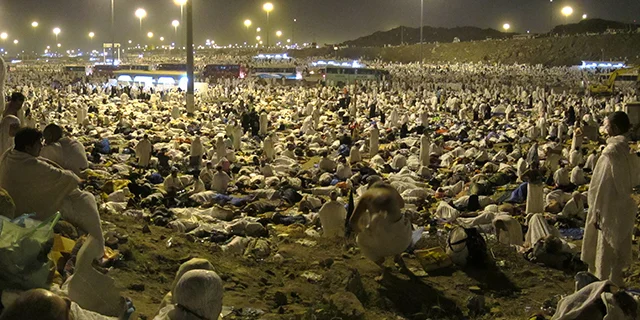
After the sunset, the pilgrims leave the Mount Arafat and travel to Muzdalifah an area located 9 kilometers west of the Arafat. They reach this place either on foot or by bussed and they spend the night there under the open skies before the 3rd day of the Hajj. The staying there includes common prayers and most pebble collecting as a preparation for the upcoming day’s ritual of “stoning the devil”.
3rd Day of the pilgrimage
(Ramy al Jamarat) “Stoning the devil”
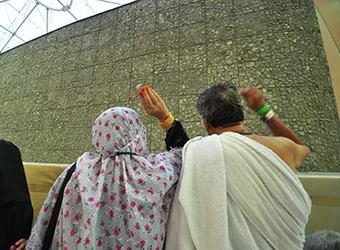
After a day at Arafat and their overnight at Muzdalifah, the pilgrims return to Mina on the 3rd day of the Hajj. In the area of Mina there are three big stone pillars that represent the temptation of the devil.
During this day, according to the ritual, the faithful are throwing seven pebbles to one out of the three pillars which are the largest one. This rite represents Abraham’s rejection towards Satan’s temptation to sacrificing his son Ismail, disobeying God’s command. Today, the ritual is performed at the multileveled Jamaraat Bridge, while for security reasons from 2004 the pillars were replaced by long walls with catch basins to collect the pebbles.
Eid ul Adha (Animal sacrifice)
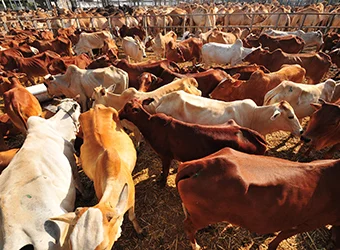
As an act commemorating Abraham’s sacrifice to God, Muslims traditionally slaughter an animal on the third day of Hajj. More specifically, the Quran points out that Abraham following God’s orders was about to sacrifice his son Ismail. However, God intervened in the last moment by swapping the boy with a sheep. As a reenactment of this incident, the faithful are used to slaughter a sheep or a camel.
Today the pilgrims of Mecca do not slaughter the animal themselves as during the past but they buy a sacrifice voucher. The animals are slaughtered (Qurbani) in the name of God without the crowd’s presence and the meat and distributed on charities to poor people around the world.
Hair shaving/cutting (Tawaf Ziyarat)
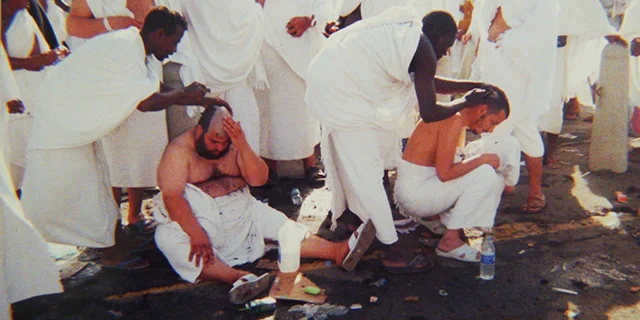
After the animal sacrificing the male pilgrims are supposed to shave their hair, while women would cut some tips of their hair. Then the faithful are encouraged to return to Mecca and proceed to a farewell Tawaf (Tawaf Ziyarat) as well as to drink water from the Zamzam well.
Final 2 days of the Hajj
The last days of the Hajj are spent between Mecca and Mina. The pilgrims are supposed to perform the stoning ritual at all three pillars of Mina, while they put on gradually their everyday clothes starting the transition the everyday life.
